Military Aviation Museum Flying Proms 2025
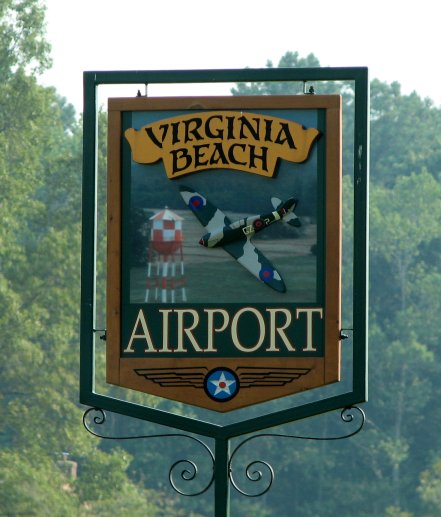
08/23/2025
My lovely wife took me out to the Military Aviation Museum/Virginia Symphony Flying Proms event last night. The theme was celebrating the end of WWII with all of the armed forces. It was originally scheduled for Father's Day weekend but weather postponed it. The event is held on the grounds of the museum in Virginia Beach, Virginia. The museum is home to forty WWII aircraft, nearly all flying, and about twenty reproduction WWI aircraft and one actual WWI plane. They set up a stage and tent cover at the junction of the east/west and north/south crosswind runways (11/29), both turf, with tents that can be rented by corporate clients. An array of food trucks is set up on the hardstand outside the German Cottbus Halle 6 hangar that was transported from Cottbus. It is all very well-organized and there is corporate sponsorship so that the museum is actually able to make some money from it. My wife and I trundled out with our folding chairs, a cooler, and some snacks. I'm estimating that there were two thousand people attending and they told us two hundred and fifty ground and organizational staff volunteers were utilized. A local fire station's aerial ladder truck was set up to stage right with a huge flag flying at about fifty feet. The event is unabashedly patriotic.
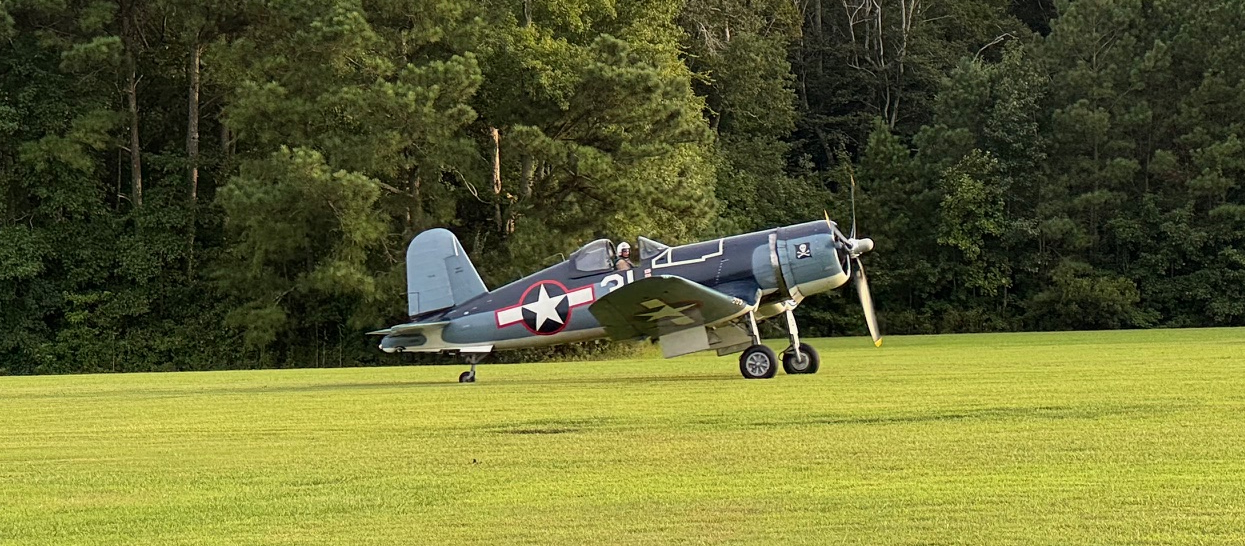
The show started with the national anthem played by the orchestra, coordinated with a loud take-off of the FG-1D Corsair and a single blast of fireworks at the peak. The Corsair did its solo act next. Since the show didn't feature aerobatics, the planes were allowed to fly directly over the crowd. It was interest to watch the plane handling, with the planes setting up approaches so that they turned at the last second and crossed the crowd without directly approaching them. As the Corsair finished up, a pair of TBM-3 Avengers and a FM-2 Wildcat took off and formed up for a formation display.
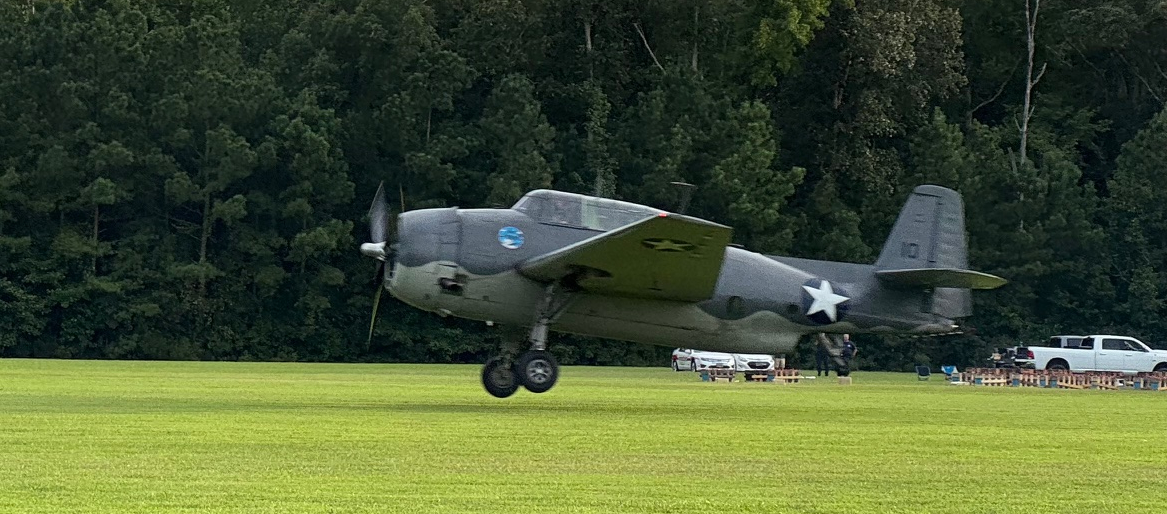
This is the type that George Bush Senior flew when he was shot down while raiding Chi Chi Jima.
Interestingly, the second of the two Avengers had no ball turret.
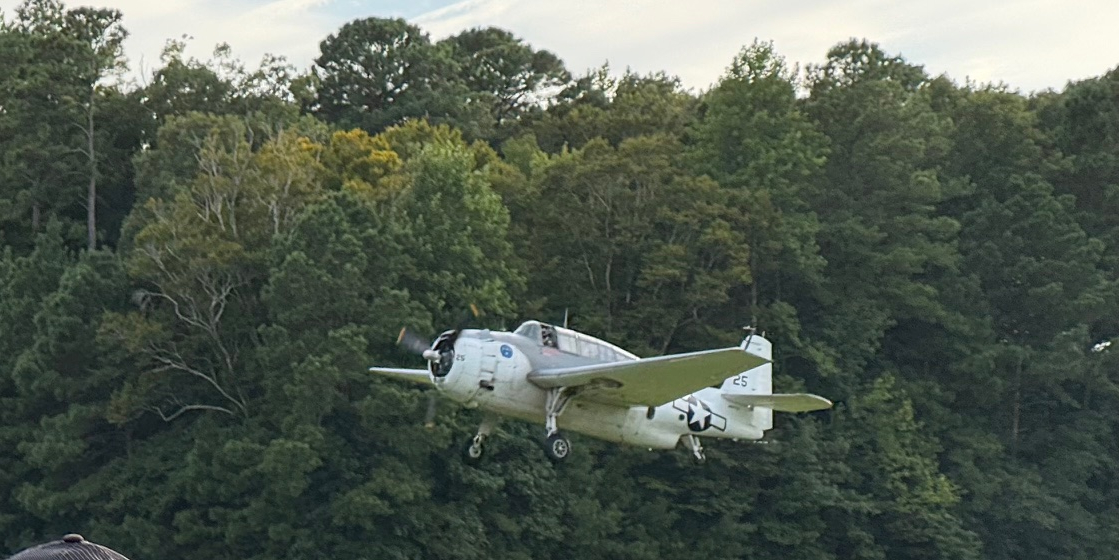
I couldn't tell you why, but the stubby little FM-2 Wildcat has always appealed to me.
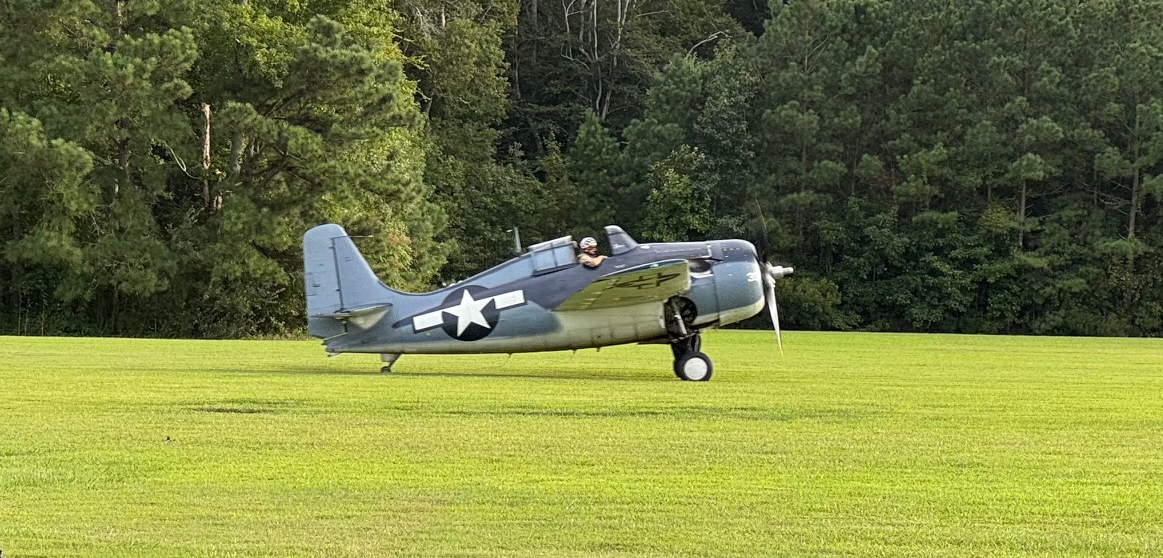
They joined up and the sound of four radials passing and maneuvering was amazing. Interestingly, the double-row radials roar and the single-row radials growl, with more midrange and the ability to discern individual cylinders firing.
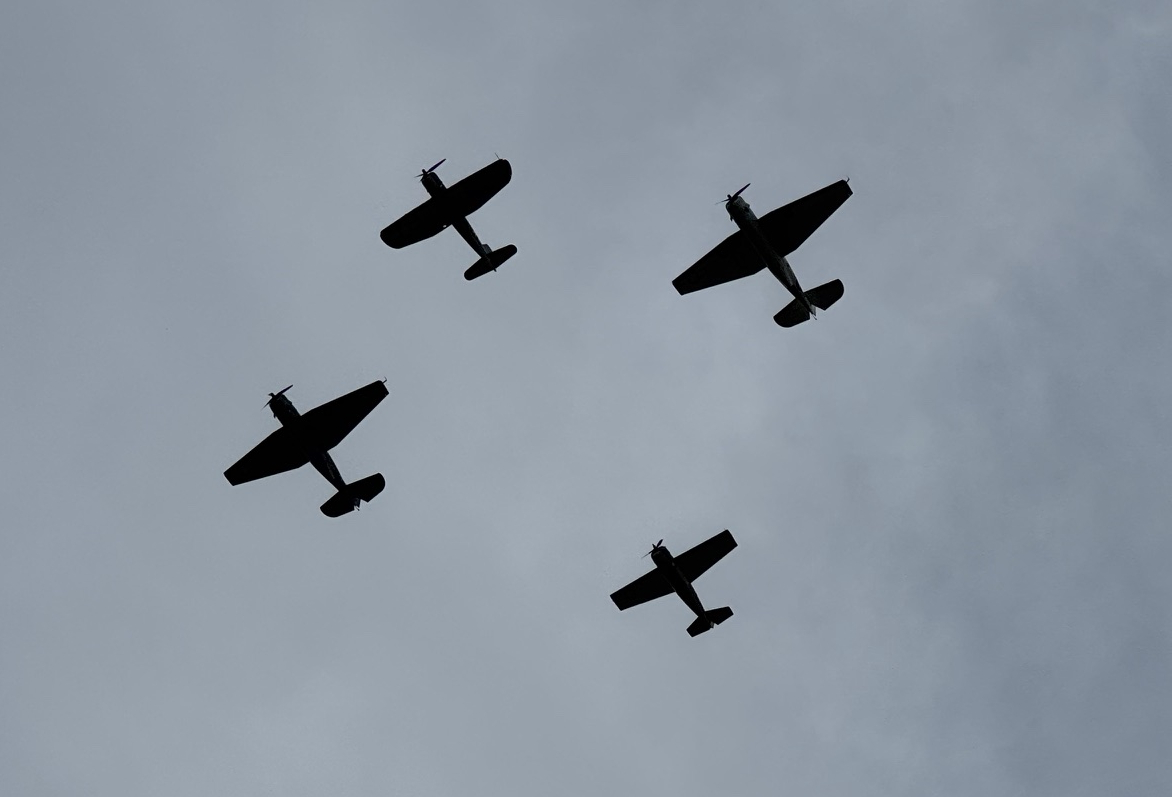
The next soloist was an AT-6 in trainer yellow which, after its solo, was joined by a Vultee BT-13 Valiant and a Stearman PT-17 "Yellow Peril".

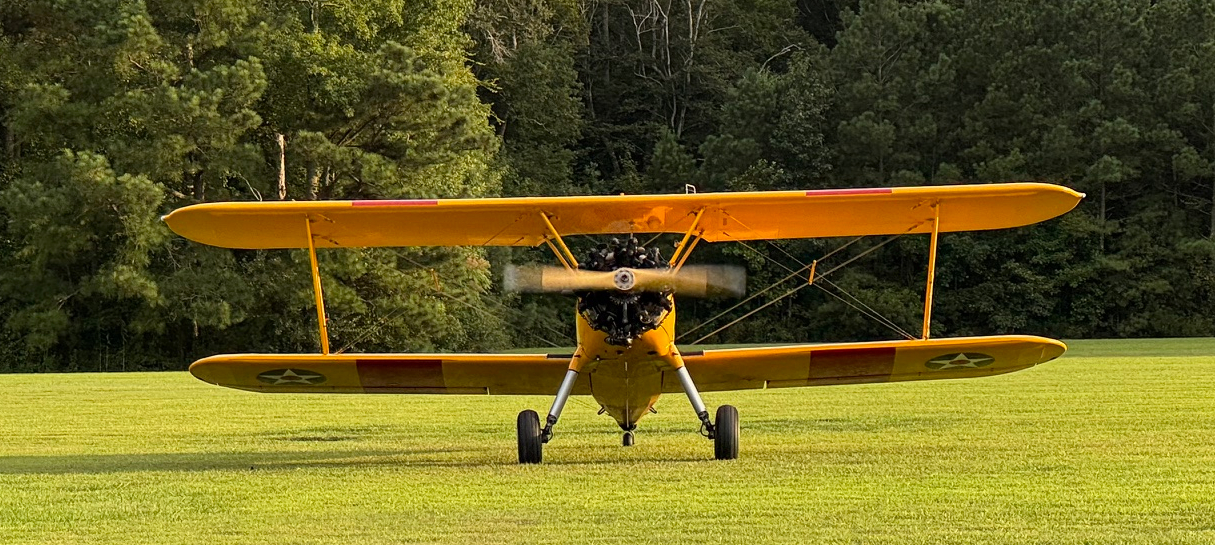
They were followed by a B-25J. Now, that is a big, nice, rackety aircraft! An earlier model of this aircraft was the type used for the Doolittle Raid.

The last soloist was a Douglas AD-4 Skyraider that was built in May of 1945, and participated in the first strikes on Korea from the USS Valley Forge.
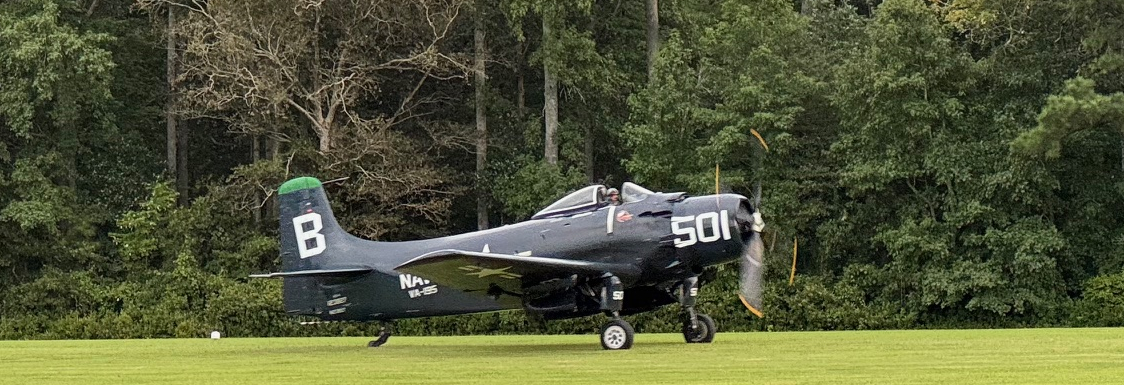
Then as a flying finale', four SNJ-4/AT-6s wearing the livery of the four combat services performed the "missing man" formation with the missing man heading west into the setting sun. I'll admit that I wanted to be in the moment for this and didn't take any pics. Next it was intermission and they opened the flight line and allowed visitors to walk around and enjoy the planes.
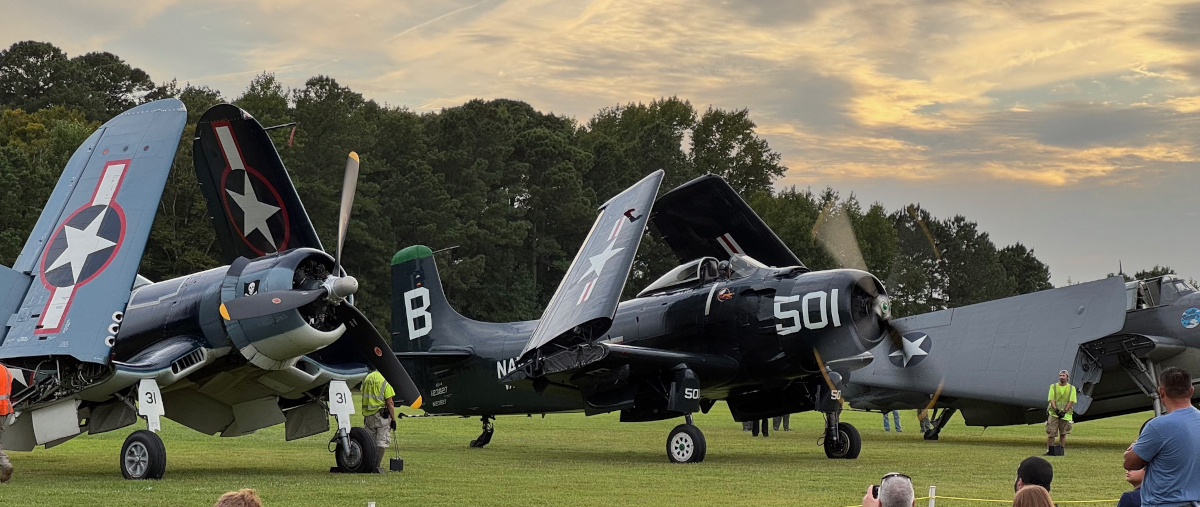

The Wildcat is always a favorite for me. Everything on the Wildcat was mechanical and hand-cranked. Did you know that the flaps on the Wildcat had no speed restriction? If you over-speeded them they simply retracted. As a result, pilots learned to set the flaps down as they entered combat. If they could sucker a Zero into slow-speed maneuvering the flaps would drop and they could turn within the Zero. Funny stuff!
I was able to look right up the crew hatch of the B-25J for the first time in my life.

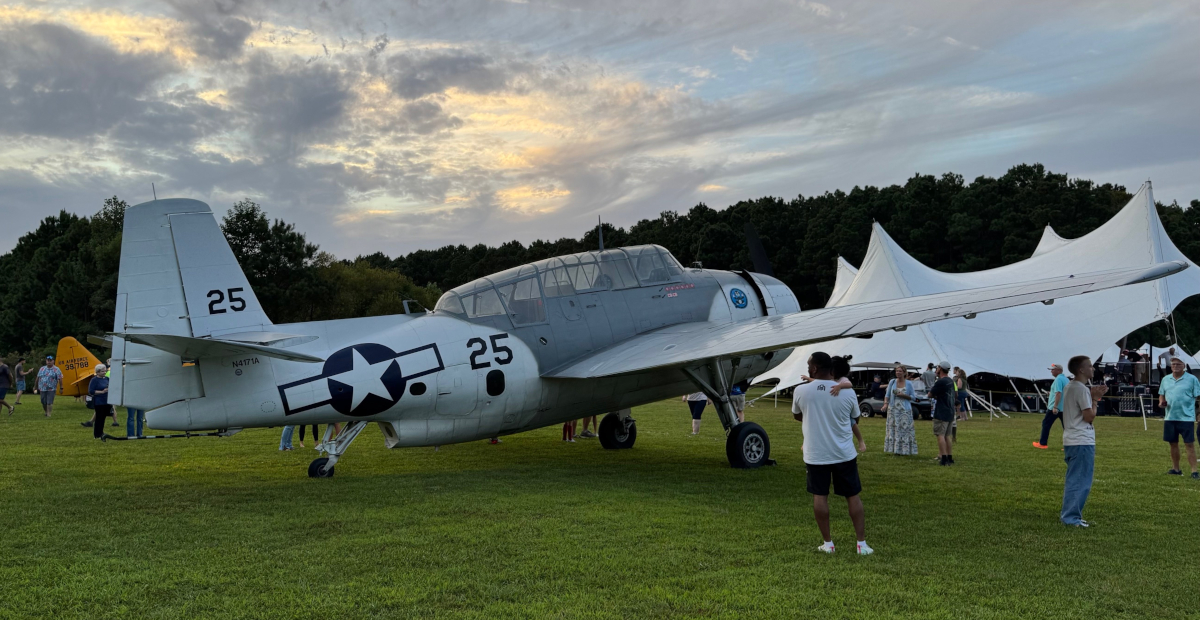
I've never seen an Avenger with the fully glazed upper canopy. The collection's Navy planes are painted in the Pacific dark blue scheme. This one, from another collection, is painted in the Atlantic light blue scheme. The lack of long-range German fighter opposition in the Atlantic allowed the Navy to delete the ball turret for a weight savings and fuel addition. There were also versions of this aircraft used for carrier onboard delivery. This could be either.
After a nice interval, they pulled in everyone from the flight line and the symphony concert began in earnest. I caught a shot of the Yellow Peril parked in front of me in the darkness. The six second exposure makes the scene look very bright.
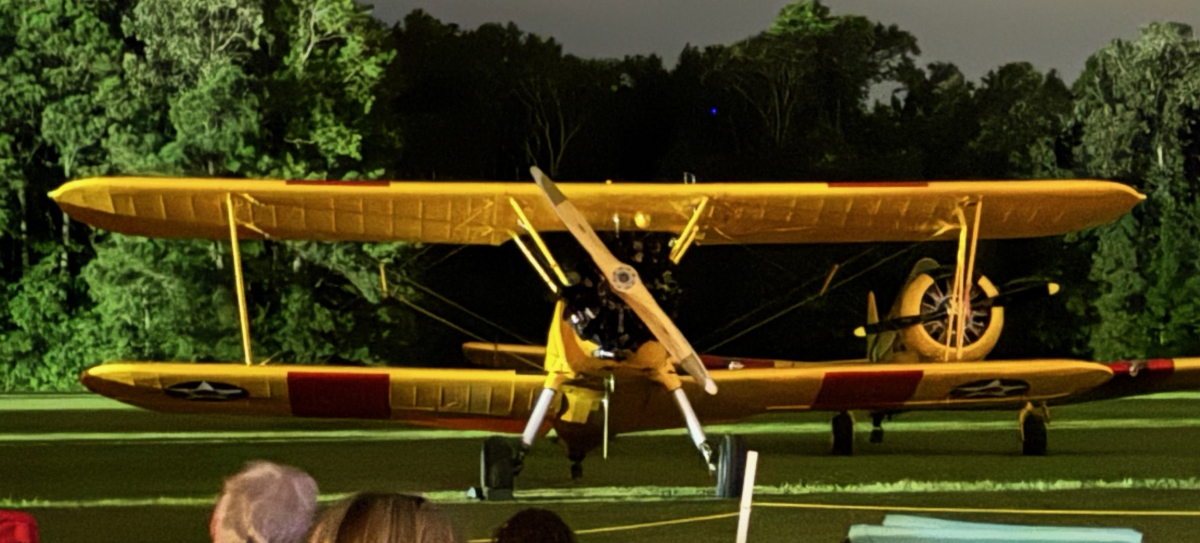
After several selections, the concert wrapped up with Tchaikovsky's 1912 Overture and The Stars and Stripes Forever accompanied by a HUGE fireworks display that sometimes overlapped the crowd. It was probably the largest display I've ever seen and wonderful. Once again I decided to be in the moment rather than in the rangefinder but I did catch a couple of shots at the beginning that looked like a bombing raid on the field.
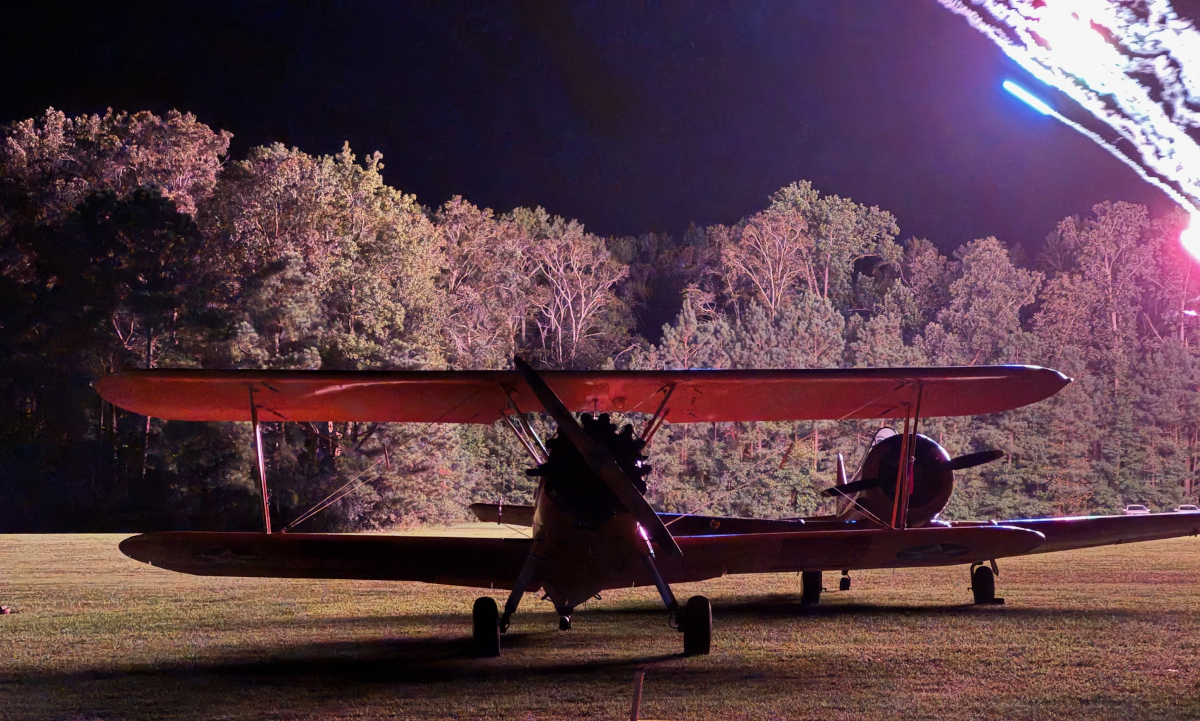
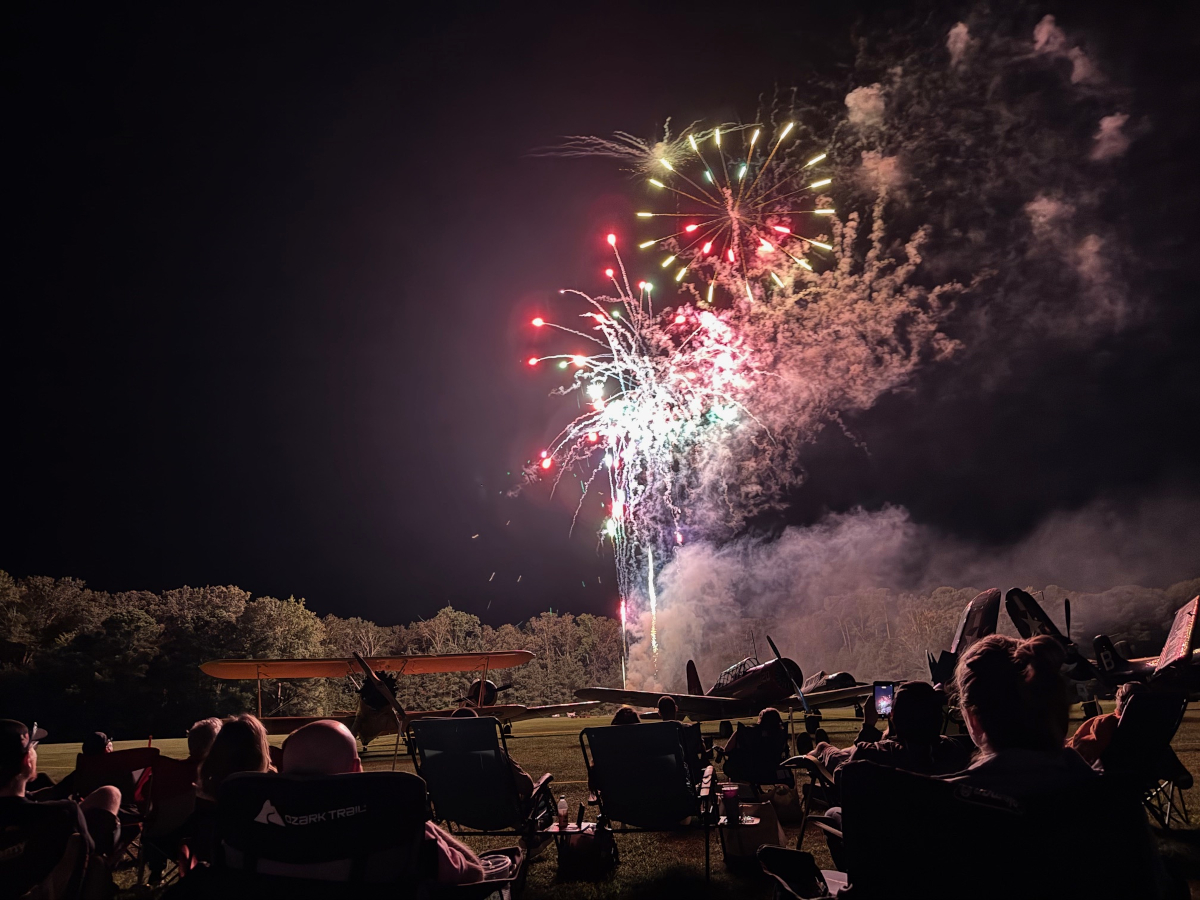
Well, those were the highlights. Interestingly enough, I realized that every plane in the show was powered by a radial engine. That's great, because I LOVE the roar of radials. Also interestingly, the SNJ/AT-6s were the loudest, perhaps because their weaker engines required them to be run higher in their power band. I did miss all the museum's V powered aircraft. I'd hoped to see their BF-109G, but no. They did have most of their WWI planes out on the field by the tower. Below you can see a Fokker D13/1 prototype peeking over my lovely wife's shoulder at left. That's the WWI hangar behind it. The air boss for the event stood on top of the RAF Goxhill Tower at right with a pair of radios. The tower was disassembled in England, brought over, and reassembled, brick by brick. It's been restored and equipped with original equipment.
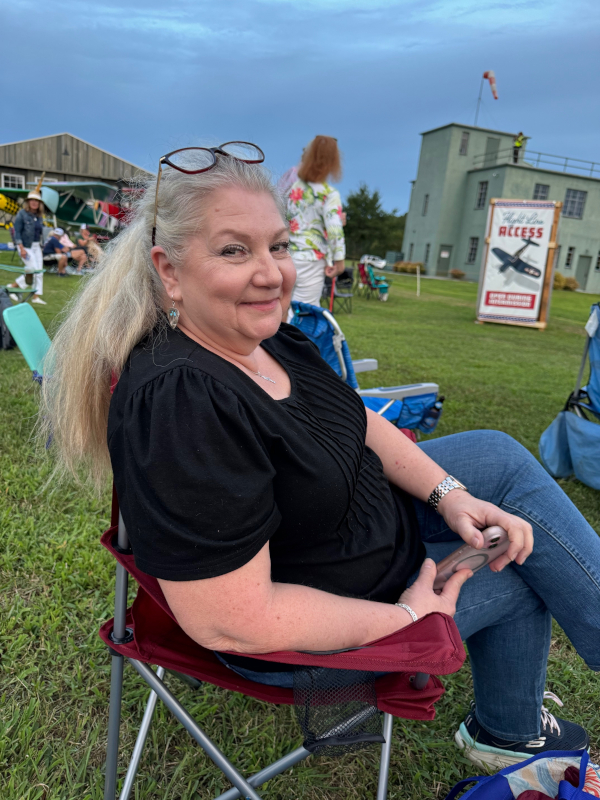
How nice to spend a fun evening in the excellent good company of my darling wife.
= =
=


















